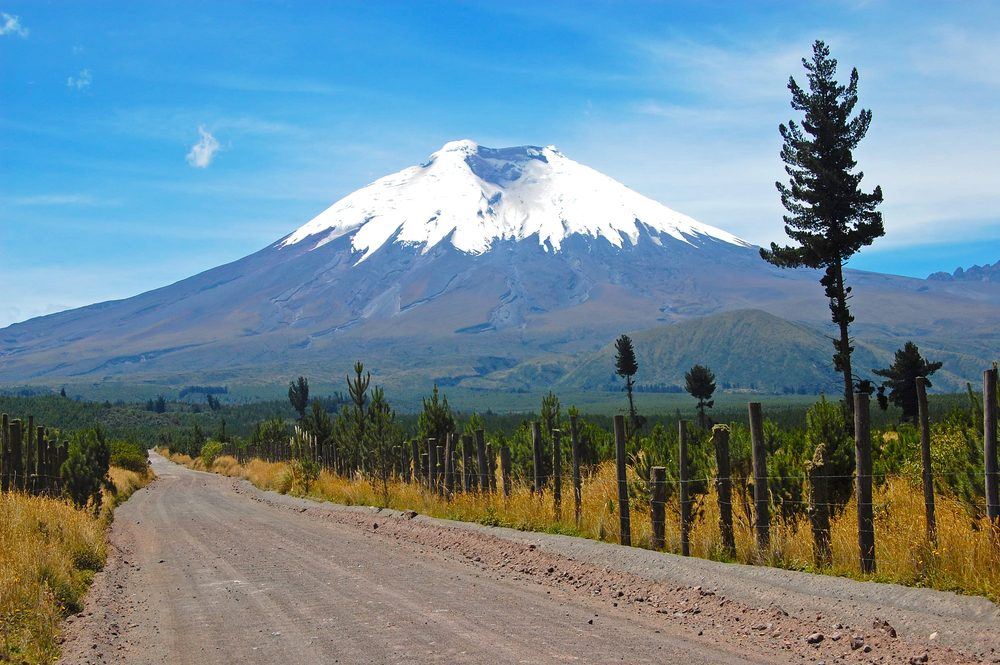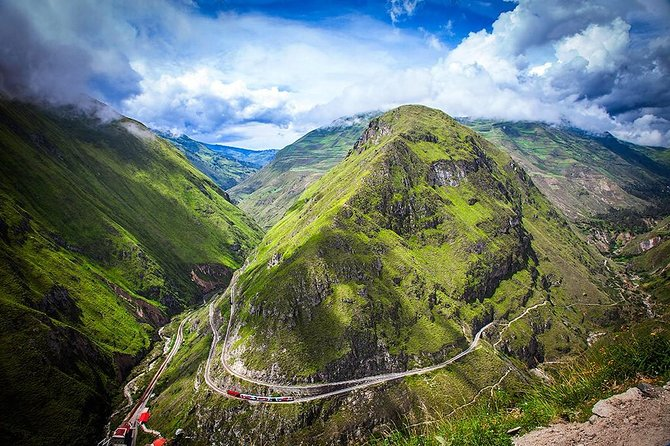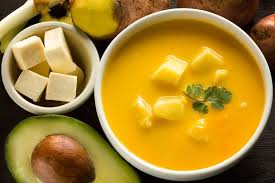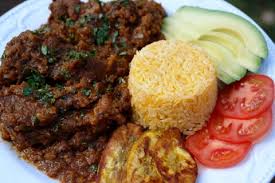Ecuador, a gem in South America, is a nation that captivates with its unparalleled natural beauty, rich history, and vibrant culture. Nestled on the equator, this country is renowned for its stunning biodiversity, ranging from the lush Amazon rainforest to the iconic Galápagos Islands. Ecuador’s warm and welcoming people, coupled with its unique blend of indigenous traditions and colonial heritage, make it a destination that resonates deeply with all who visit.
Table of Contents
Geography
Ecuador, with an area of approximately 283,560 square kilometers, is one of the smallest countries in South America, yet it boasts one of the most diverse landscapes on the planet. The country is divided into four distinct regions: the Amazon Rainforest, the Andean Highlands, the Pacific Coast, and the Galápagos Islands. Each region offers a unique environment, from the towering Andean peaks to the coastal plains and the lush Amazon basin.
Ecuador shares borders with Colombia to the north, Peru to the south and east, and the Pacific Ocean to the west. Its geographical diversity is matched by its cultural richness, making it a microcosm of South American culture and biodiversity. The country’s location along the equator also means that it enjoys a relatively consistent climate throughout the year, though the weather can vary significantly depending on the region.
States of Ecuador
Ecuador is divided into 24 provinces, not states. These provinces are the primary administrative divisions in the country. Each province is further subdivided into cantons, which are then divided into parishes. Here’s a table listing all 24 provinces of Ecuador along with their capitals:
| Province | Capital |
|---|---|
| 1. Azuay | Cuenca |
| 2. Bolívar | Guaranda |
| 3. Cañar | Azogues |
| 4. Carchi | Tulcán |
| 5. Chimborazo | Riobamba |
| 6. Cotopaxi | Latacunga |
| 7. El Oro | Machala |
| 8. Esmeraldas | Esmeraldas |
| 9. Galápagos | Puerto Baquerizo Moreno |
| 10. Guayas | Guayaquil |
| 11. Imbabura | Ibarra |
| 12. Loja | Loja |
| 13. Los Ríos | Babahoyo |
| 14. Manabí | Portoviejo |
| 15. Morona Santiago | Macas |
| 16. Napo | Tena |
| 17. Orellana | Puerto Francisco de Orellana |
| 18. Pastaza | Puyo |
| 19. Pichincha | Quito |
| 20. Santa Elena | Santa Elena |
| 21. Santo Domingo de los Tsáchilas | Santo Domingo |
| 22. Sucumbíos | Nueva Loja |
| 23. Tungurahua | Ambato |
| 24. Zamora Chinchipe | Zamora |
History
Ecuador’s history is a tapestry woven with ancient civilizations, colonial conquests, and a struggle for independence. The land that is now Ecuador was once home to the Inca Empire, which extended its reach into the region during the late 15th century. The Incas, known for their advanced agricultural practices and impressive architectural achievements, left a lasting legacy in Ecuador, particularly in the highlands where remnants of their cities and fortresses can still be found.
The arrival of the Spanish in the 16th century marked the beginning of a new era in Ecuador’s history. Spanish conquistadors, led by Francisco Pizarro, defeated the Inca Empire and established a colonial rule that would last for nearly 300 years. During this period, Ecuador became an important part of the Viceroyalty of Peru, contributing to the wealth of the Spanish Empire through its abundant resources, particularly gold and silver.
Ecuador’s fight for independence began in the early 19th century, inspired by the broader Latin American independence movement. The country achieved independence from Spain on May 24, 1822, after the Battle of Pichincha, where General Antonio José de Sucre led the patriot forces to victory. Following independence, Ecuador became part of the Republic of Gran Colombia, a short-lived union of several South American countries under the leadership of Simón Bolívar, before becoming a fully independent republic in 1830.
Top Ten Must-Visit Destinations
Galápagos Islands

The Galápagos Islands are perhaps Ecuador’s most famous destination, known for their unique wildlife and stunning landscapes. This archipelago, located about 1,000 kilometers off the coast of Ecuador, is a UNESCO World Heritage site and offers visitors a chance to see species found nowhere else on Earth, such as the giant tortoises and marine iguanas. The islands’ pristine environment, combined with opportunities for snorkeling, diving, and hiking, make it a paradise for nature lovers.
Quito

Quito, the capital city of Ecuador, is a city steeped in history and culture. Situated high in the Andes at an altitude of 2,850 meters, Quito is one of the best-preserved colonial cities in Latin America. The city’s historic center, a UNESCO World Heritage site, is a maze of narrow cobblestone streets lined with colonial-era churches, monasteries, and plazas. The city is also home to the Mitad del Mundo monument, which marks the location of the equator.
Cuenca

Cuenca is another colonial gem in Ecuador, known for its charming streets, beautiful architecture, and vibrant arts scene. The city’s historic center, also a UNESCO World Heritage site, is filled with well-preserved Spanish colonial buildings, including the famous blue-domed Cathedral of the Immaculate Conception. Cuenca is also a hub for traditional crafts, particularly Panama hats, which are actually made in Ecuador.
Cotopaxi National Park

Cotopaxi National Park is home to one of the highest active volcanoes in the world, Cotopaxi, which towers at 5,897 meters. The park is a popular destination for hikers and mountaineers, offering challenging trails and stunning views of the surrounding Andean landscape. The park is also home to a variety of wildlife, including Andean condors, wild horses, and llamas.
Otavalo

Otavalo is a town famous for its indigenous market, one of the largest and most vibrant in South America. The market is a bustling center of activity where local artisans sell a wide range of goods, from colorful textiles and clothing to handcrafted jewelry and pottery. The town is also known for its rich indigenous culture, with traditional music, dance, and festivals playing a central role in community life.
Baños

Baños, located in the Andean Highlands, is known as the “Gateway to the Amazon” and is famous for its hot springs, waterfalls, and adventure sports. The town is surrounded by lush green mountains and is a popular destination for activities such as hiking, rafting, and zip-lining. Baños is also a spiritual center, with numerous churches and shrines dedicated to the Virgin of the Holy Water, a local patron saint.
Mindo Cloud Forest

The Mindo Cloud Forest is a biodiversity hotspot located just a couple of hours from Quito. This lush, misty forest is home to an incredible array of bird species, making it a paradise for birdwatchers. Visitors can also enjoy hiking, zip-lining, and exploring the forest’s waterfalls and rivers. The town of Mindo itself is a charming place with a relaxed atmosphere, offering a perfect escape from the hustle and bustle of the city.
Guayaquil

Guayaquil, Ecuador’s largest city and main port, is a bustling metropolis with a rich history and a vibrant cultural scene. The city’s waterfront, known as the Malecón 2000, is a popular spot for locals and tourists alike, offering beautiful views of the Guayas River, parks, museums, and restaurants. Guayaquil is also home to the colorful Las Peñas neighborhood, with its cobblestone streets, colonial houses, and art galleries.
Amazon Rainforest

Ecuador’s Amazon Rainforest is one of the most biodiverse places on the planet, home to thousands of species of plants, animals, and indigenous communities. Visitors to the Amazon can explore the jungle on guided tours, visit indigenous villages, and experience the incredible diversity of wildlife, including monkeys, jaguars, and countless bird species. The rainforest is also an important part of Ecuador’s cultural heritage, with many indigenous groups still living traditional lifestyles.
The Devil’s Nose Train

The Devil’s Nose Train is one of the most famous train rides in the world, offering breathtaking views of the Andean landscape as it winds its way through steep mountain passes. The train ride is named after a particularly difficult section of track that descends the side of a mountain, known as the Devil’s Nose. The journey is an unforgettable experience, offering a unique perspective on Ecuador’s rugged terrain and engineering feats.
Culture
Ecuador’s culture is a vibrant blend of indigenous traditions and Spanish colonial influences, reflecting the country’s diverse history and ethnic makeup. The country is home to a large indigenous population, with over a dozen distinct ethnic groups, each with its own language, customs, and traditions. Spanish is the official language, but many indigenous languages, including Quechua and Shuar, are also widely spoken, particularly in rural areas.
Ecuadorians are known for their strong sense of community and hospitality, with family playing a central role in social life. Traditional music and dance are an important part of Ecuadorian culture, with genres such as pasillo, marimba, and the Andean sanjuanito being popular throughout the country. Festivals and celebrations are held throughout the year, often featuring traditional costumes, music, and dance, reflecting the country’s rich cultural heritage.
Festivals
Ecuador is a country that loves to celebrate, with festivals and holidays playing an important role in the social and cultural life of the country. One of the most famous festivals is Carnival, celebrated in the days leading up to Lent. Carnival in Ecuador is marked by lively parades, colorful costumes, and traditional music and dance. In many parts of the country, people celebrate by throwing water, flour, and colored powder at each other, a tradition that adds to the festive atmosphere.
Another important festival in Ecuador is Inti Raymi, or the Festival of the Sun, which is celebrated by the indigenous communities in the Andes. Inti Raymi, which takes place during the June solstice, is a celebration of the sun and the harvest. The festival is marked by traditional music, dance, and ceremonies, often taking place at ancient Inca sites such as Ingapirca. It is a time of great cultural pride for the indigenous people, reflecting their deep connection to the land and their ancestors.
Economy
Ecuador’s economy is diverse, with key sectors including oil, agriculture, and tourism. Oil is the country’s largest export, accounting for a significant portion of government revenue and foreign exchange earnings. The country’s oil reserves are mainly located in the Amazon region, and the industry has been a major driver of economic growth since the 1970s. However, the reliance on oil has also made the economy vulnerable to fluctuations in global oil prices.
In recent years, tourism has become an increasingly important part of Ecuador’s economy. The country’s diverse landscapes, rich cultural heritage, and world-renowned sites like the Galápagos Islands attract visitors from all over the globe. The government has invested in infrastructure and marketing to promote Ecuador as a top travel destination, which has helped to boost the economy and create jobs in the tourism sector. Additionally, Ecuador is focusing on sustainable tourism to protect its natural resources while providing economic benefits to local communities.
Cuisine
Ecuadorian cuisine is as diverse as its geography, with each region offering its own unique flavors and dishes. On the coast, seafood is a staple, with dishes like ceviche, made from fresh fish marinated in lime juice, being a popular choice. Plantains and rice are also commonly served with meals, often accompanied by aji, a spicy sauce made from peppers.
In the highlands, traditional dishes are heartier, reflecting the cooler climate. Potatoes, corn, and quinoa are common ingredients, often used in soups and stews such as locro, a potato soup typically served with cheese and avocado. Another popular dish is llapingachos, potato patties stuffed with cheese and served with sausage, fried eggs, and a peanut sauce.
The Amazon region offers its own unique culinary traditions, with dishes often featuring yucca (cassava) and plantains. In some parts of the Amazon, you can even find exotic foods like roasted ants or grilled fish wrapped in leaves. Throughout Ecuador, meals are often accompanied by fresh fruit juices made from the country’s wide variety of tropical fruits, such as passion fruit, guanabana, and naranjilla.
Top Eight Most Famous Food








Ten Interesting Facts About Ecuador
- Ecuador was the first country in the world to officially recognize the rights of nature in its constitution.
- The country is named after the equator, which runs directly through it.
- Ecuador has the world’s highest concentration of rivers per square kilometer.
- Quito, Ecuador’s capital, is the second-highest capital city in the world, after La Paz in Bolivia.
- Ecuador is one of the 17 megadiverse countries in the world, with an incredible variety of species and ecosystems.
- The Galápagos Islands inspired Charles Darwin’s theory of evolution by natural selection.
- Ecuador is the world’s leading exporter of bananas, supplying more than a quarter of the global market.
- The Panama hat, despite its name, actually originates from Ecuador.
- Ecuador’s Cotopaxi is one of the highest active volcanoes in the world.
- The country abolished its own currency, the sucre, in 2000 and adopted the U.S. dollar as its official currency.
Conclusion
Ecuador is a land of remarkable diversity, where ancient cultures meet stunning natural beauty. From the towering Andes and lush Amazon to the pristine beaches and the unique Galápagos Islands, Ecuador offers a wealth of experiences for every traveler. Its rich history, vibrant culture, and welcoming people make it a country that is not only beautiful but also deeply captivating. Whether you’re exploring colonial cities, hiking through national parks, or simply enjoying the local cuisine, Ecuador is a destination that leaves a lasting impression.
let’s enjoy few years on earth with peace and happiness….✍🏼🙏

